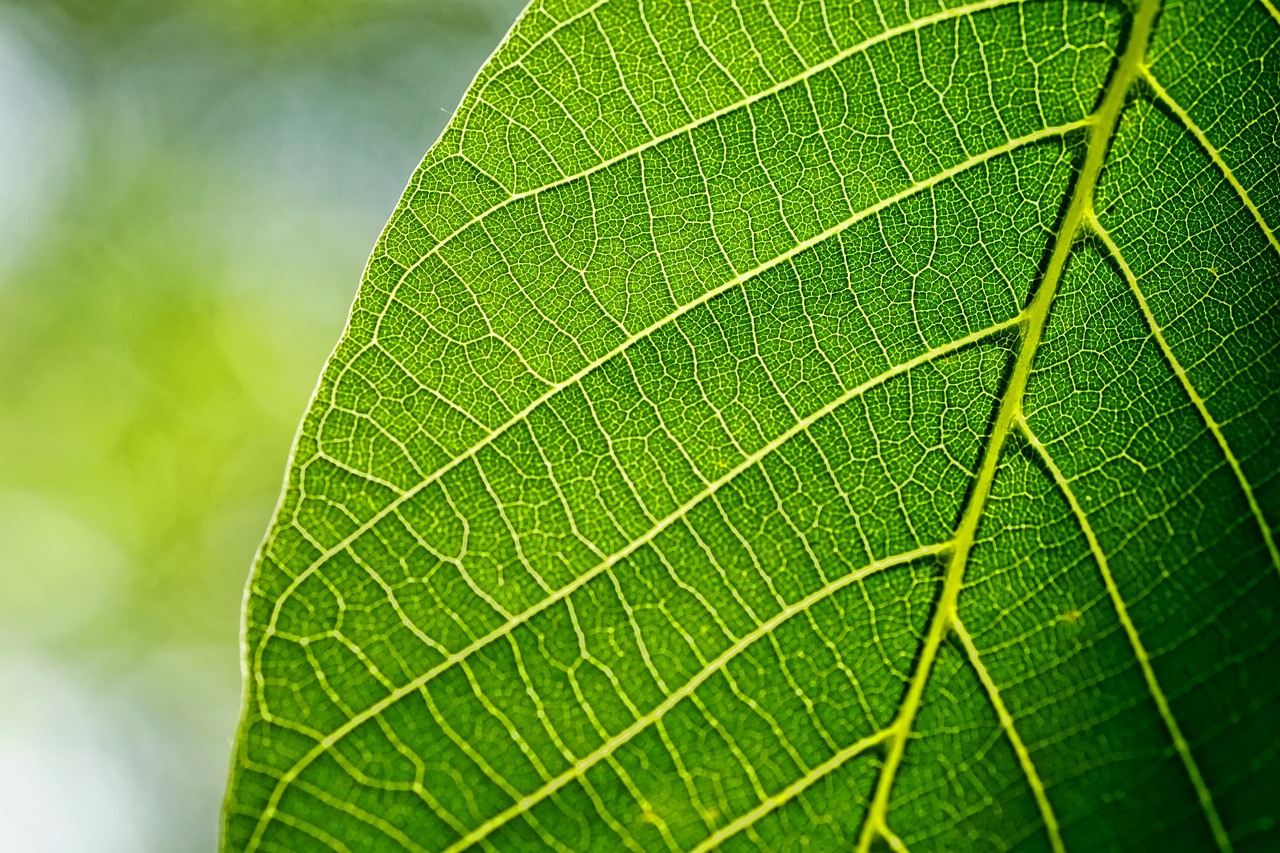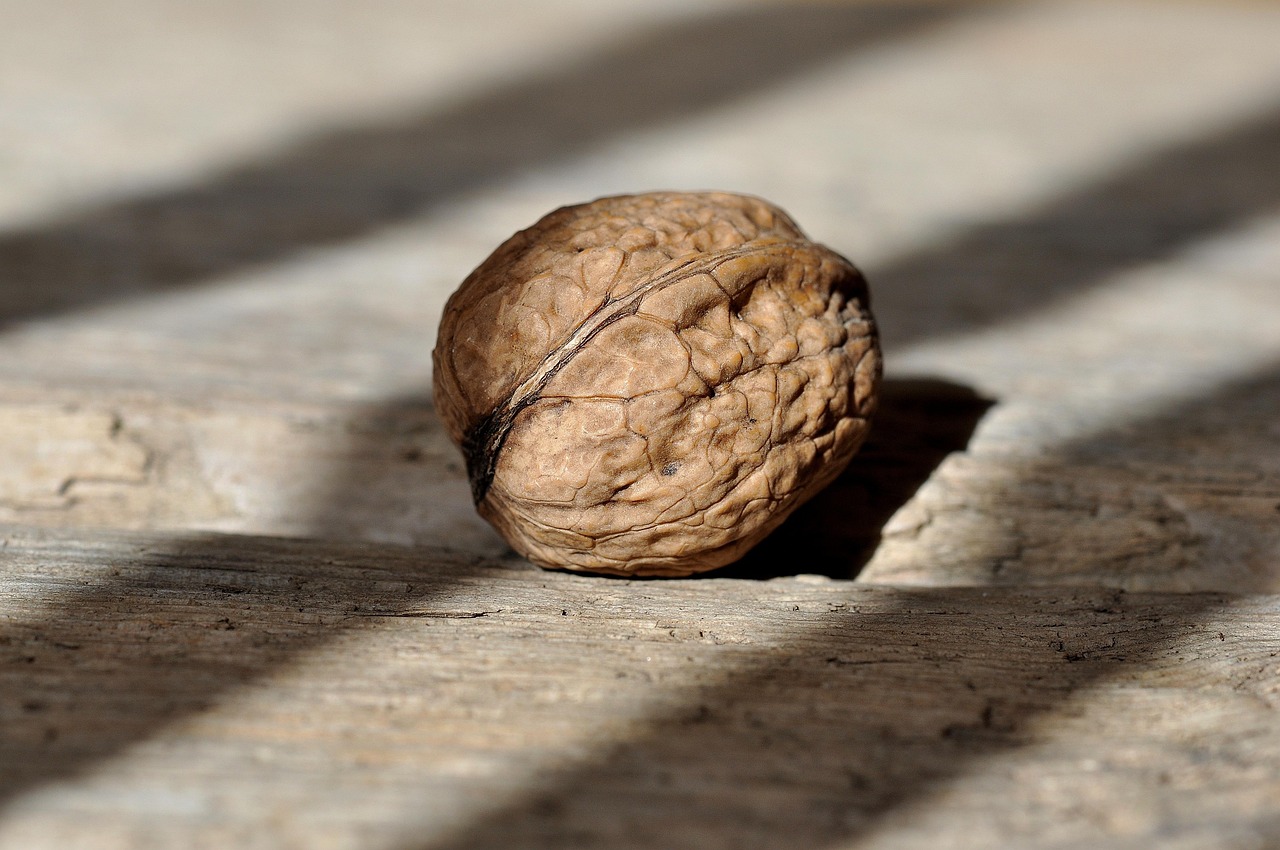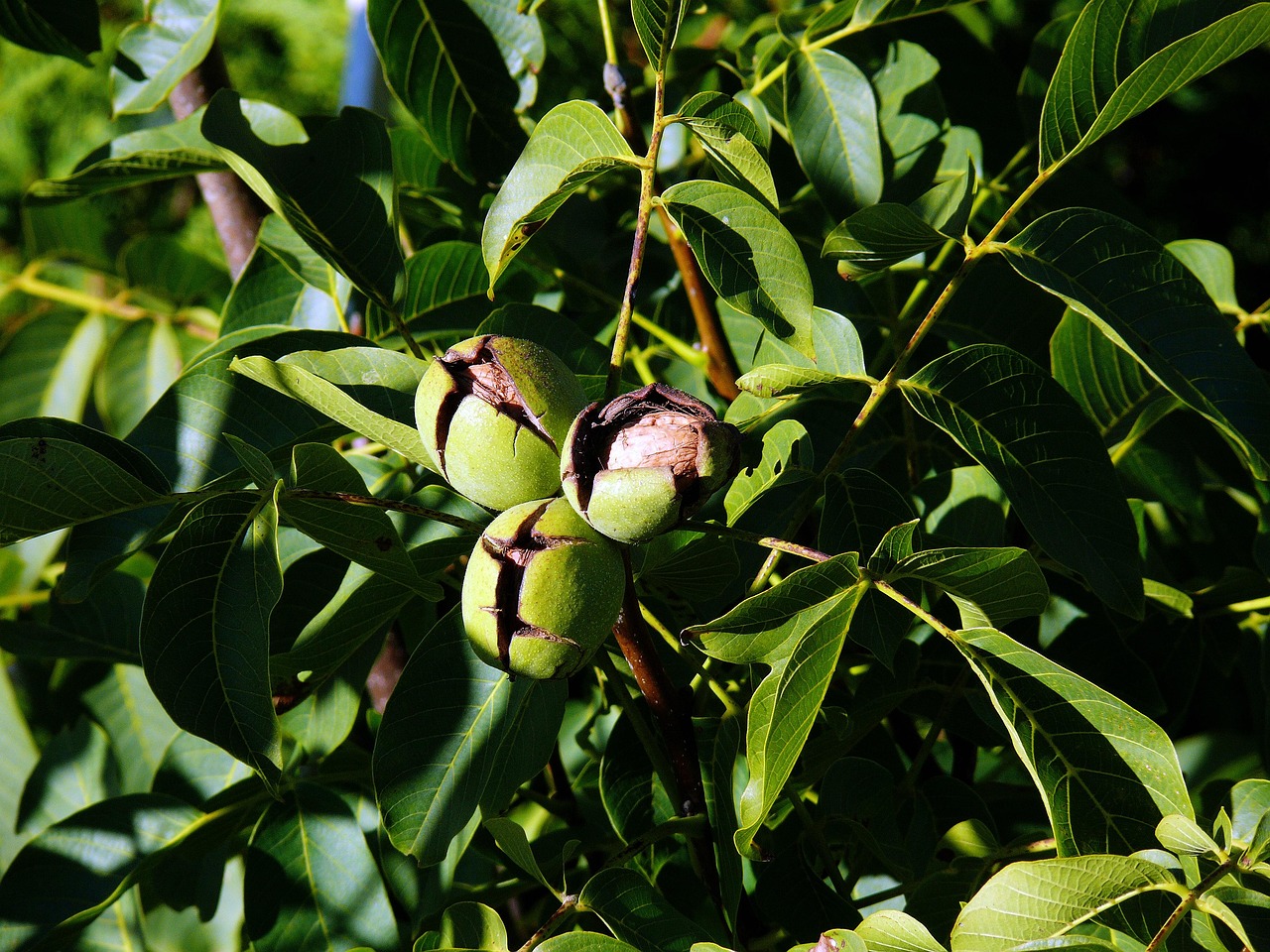Pruning walnut trees effectively increases nut production by improving light penetration, air circulation, and overall tree health. Proper techniques enhance nut quality and yield while reducing disease risk.
Walnut trees are renowned for their delicious nuts and valuable timber. Pruning is a crucial practice that can significantly influence the productivity of these trees. When done correctly, pruning not only helps in maintaining tree health but also enhances the quality and quantity of nut production. Understanding the right techniques and timing for pruning walnut trees is essential for any grower looking to maximize their harvest.

Walnut trees generally fall into two main species: the English walnut (Juglans regia) and the black walnut (Juglans nigra). Both species require specific care and management practices to thrive. Pruning is vital for both, though the techniques may vary slightly based on the species. The goal of pruning is to shape the tree, remove dead or diseased wood, and encourage new growth.
Understanding Walnut Tree Growth
Before delving into pruning techniques, it is important to understand how walnut trees grow. Walnut trees can reach heights of up to 100 feet and have a broad canopy. They typically begin producing nuts in their 5th to 7th year, with full production occurring around 15 to 20 years of age. The following factors play a role in their growth and nut production:
- Soil Quality: Well-draining soil rich in organic matter promotes healthy growth.
- Sunlight: Walnut trees need full sun for optimal nut production.
- Watering: Adequate water during the growing season is critical for nut development.
- Temperature: Walnuts thrive in temperate climates with distinct seasons.
Understanding these growth factors can help growers make informed decisions regarding pruning and overall tree management. Proper pruning practices can further enhance these natural growth conditions, leading to increased yields.

The Importance of Pruning
Pruning walnut trees serves several important purposes. It encourages healthy growth by removing dead or diseased branches, which can harbor pests and diseases. Additionally, proper pruning can improve air circulation within the canopy, reducing the likelihood of fungal infections and other diseases that thrive in damp environments.
Another significant benefit of pruning is that it allows sunlight to penetrate through the canopy. This exposure is crucial for the development of new leaves and nuts. When branches are overcrowded, they can block light from reaching lower branches, which can lead to poor nut formation. By strategically removing some branches, growers can promote better light distribution throughout the tree.
Best Practices for Pruning Walnut Trees
To achieve the best results when pruning walnut trees, certain practices should be followed. Here are some key guidelines:

- Timing: The best time to prune walnut trees is during late winter or early spring before new growth begins. This timing minimizes sap loss and allows for better healing.
- Tools: Use sharp, clean pruning shears or saws to make clean cuts. This helps prevent injury to the tree and reduces infection risk.
- Technique: Remove dead or diseased branches first. Then focus on thinning out crowded areas to improve air and light penetration.
- Avoid Topping: Never top walnut trees as this can lead to poor growth and increased disease susceptibility.
Following these best practices will ensure that walnut trees remain healthy and productive over their lifespan. Regular monitoring and maintenance through pruning can lead to a more robust tree structure and improved nut yield.
Common Mistakes to Avoid
While pruning is beneficial, there are common mistakes that growers should avoid to ensure the health of their walnut trees:
- Over-Pruning: Removing too many branches at once can stress the tree and reduce nut production.
- Poor Timing: Pruning at the wrong time of year can lead to excessive sap loss or hinder new growth.
- Neglecting Tree Health: Failing to address signs of disease or pest infestations before pruning can worsen problems.
A well-planned pruning strategy takes time and patience but is essential for fostering a productive walnut grove. By understanding the needs of walnut trees and avoiding common pitfalls, growers can enjoy bountiful harvests season after season.

Pruning Techniques for Walnut Trees
Understanding various pruning techniques is essential for achieving optimal results when managing walnut trees. Different methods can be employed based on the tree’s age, structure, and health status. Here are some effective pruning techniques to consider:
1. Thinning Pruning
Thinning pruning involves the selective removal of branches to improve light penetration and air circulation within the canopy. This technique is particularly beneficial for mature walnut trees with dense foliage. When done correctly, thinning can lead to healthier growth and increased nut production.
- Identify crowded branches: Look for branches that are crossing or growing too closely together.
- Remove weak growth: Focus on eliminating smaller, weak branches that do not contribute significantly to the tree’s structure.
- Maintain a balanced shape: Aim for an open center that allows sunlight to reach all areas of the tree.
2. Heading Cuts
Heading cuts involve cutting back a branch to a bud or a lateral branch. This technique encourages new growth and can be used to shape the tree. However, heading cuts should be used sparingly, as excessive use can lead to overgrowth and increased pest problems.
- Choose healthy buds: When making heading cuts, select buds that are oriented outward to promote a wider tree structure.
- Limit the number of cuts: Avoid making too many heading cuts in one season to prevent stress on the tree.
3. Restoration Pruning
If a walnut tree has been neglected or suffers from disease or damage, restoration pruning can help revive its health. This method focuses on removing dead, damaged, or diseased branches while encouraging new growth.
- Inspect the tree: Carefully assess the overall health of the tree before commencing restoration pruning.
- Remove damaged wood: Cut back any dead or diseased branches to prevent further issues.
- Encourage healthy growth: After removing damaged sections, focus on promoting new growth by thinning other areas of the canopy.
Seasonal Considerations for Pruning
The timing of pruning is critical for effective walnut tree management. Seasonal considerations can influence how well the tree responds to pruning efforts. Here are some key points to keep in mind:
Winter Pruning
Winter is often considered the best time for pruning walnut trees. During this dormant season, trees are less susceptible to stress and disease. The absence of leaves allows for better visibility and access to branches.
- Reduced sap loss: Pruning during dormancy minimizes sap flow, which can otherwise hinder healing.
- Better visibility: With no foliage, it is easier to identify which branches to cut.
Spring Pruning
Spring pruning should be approached with caution. While it can be beneficial for shaping and encouraging new growth, it may also result in sap loss and stress if done excessively.
- Focus on light pruning: If necessary, limit pruning to small adjustments rather than major cuts.
- Monitor for pests: Spring is a time when pests may emerge; ensure that any pruning does not attract them.
Pest and Disease Management during Pruning
Pruning walnut trees can inadvertently expose them to pests and diseases. To mitigate these risks, it is essential to implement effective management strategies during and after the pruning process.
Pest Control Strategies
Common pests that may affect walnut trees include aphids, spider mites, and walnut husk flies. Here are some strategies to manage these pests:
- Regular inspections: Check trees frequently for signs of pest infestations.
- Use insecticidal soaps: Apply these treatments as needed to control minor infestations without harming beneficial insects.
- Cultural practices: Maintain healthy soil and tree conditions to reduce pest attraction.
Disease Prevention Techniques
Diseases such as anthracnose and walnut blight can pose significant threats to walnut trees. Preventative measures are vital in managing these issues:
- Proper sanitation: Clean up fallen leaves and debris around the base of the tree to prevent disease spread.
- Fungicide applications: Consider applying fungicides during high-risk periods as a preventative measure.
- Avoid excessive moisture: Ensure proper drainage in soil to prevent root rot and other moisture-related diseases.
By incorporating these strategies into your pruning routine, you can enhance the health and productivity of your walnut trees while minimizing risks associated with pests and diseases.
Tools and Equipment for Pruning Walnut Trees
Having the right tools and equipment is essential for effective pruning of walnut trees. Proper tools not only make the task easier but also ensure clean cuts, which are crucial for tree health. Here are some commonly used tools along with their specific purposes:
1. Pruning Shears
Pruning shears are essential for making precise cuts on smaller branches. They come in two main types: bypass and anvil shears.
- Bypass Shears: Ideal for live branches, these shears have two curved blades that bypass each other for a clean cut.
- Anvil Shears: Best for dead or dry branches, they have one straight blade that cuts against a flat surface.
2. Loppers
Loppers are larger than pruning shears and are used to cut thicker branches that are difficult to reach. They provide additional leverage and can usually handle branches up to two inches in diameter.
- Long-handled Loppers: Offer extra reach, making it easier to access higher branches.
- Ratchet Loppers: Equipped with a ratcheting mechanism that allows for easier cutting through tough wood.
3. Pruning Saws
For branches thicker than what loppers can handle, a pruning saw is necessary. These saws come in various sizes and can handle larger cuts effectively.
- Foldable Pruning Saws: Easy to store and carry, they are convenient for mobile pruning tasks.
- Curved Blade Saws: Designed for quicker cutting action on branches, making them effective for larger limbs.
4. Pole Pruners
Pole pruners are useful for reaching high branches without the need for a ladder. They consist of a long pole with pruning shears attached to the end.
- Manual Pole Pruners: Require physical effort to operate but are often less expensive.
- Telescoping Pole Pruners: Allow you to extend the length of the pole for greater reach.
Preparing for Pruning
Before starting the pruning process, proper preparation is essential to ensure effectiveness and safety. Here are some steps to follow:
1. Assessing Tree Health
Before making any cuts, assess the overall health of the walnut tree. Look for signs of disease, damage, or pest infestations that may require attention before pruning.
- Check Leaves: Look for discoloration, spots, or wilting leaves that indicate potential issues.
- Inspect Branches: Examine branches for cracks, deadwood, or signs of pests.
2. Planning Your Cuts
Before you start pruning, plan which branches to remove based on your goals. Consider the overall shape of the tree and how your cuts will affect light penetration and air circulation.
- Create a Strategy: Identify which branches will be removed first and which will remain to maintain balance.
- Mark Cuts: If necessary, use chalk or tape to mark branches you plan to prune.
3. Safety Precautions
Safety should always be a priority when pruning walnut trees. Here are some important safety precautions to consider:
- Wear Protective Gear: Use gloves, goggles, and sturdy footwear to protect yourself from falling debris and sharp tools.
- Check Weather Conditions: Avoid pruning in windy or wet conditions to minimize risk of accidents.
- Use a Stable Ladder: If using a ladder, ensure it is stable and positioned on level ground to prevent falls.
Post-Pruning Care
After pruning, it is essential to provide proper care to promote healing and growth in walnut trees. This includes monitoring the tree for signs of stress and implementing practices that encourage healthy recovery.
1. Watering
Adequate watering after pruning helps the tree recover from stress. The following tips can help:
- Deep Watering: Ensure thorough watering at the base of the tree to encourage deep root growth.
- Avoid Overwatering: Monitor soil moisture to prevent root rot; the soil should be moist but not soggy.
2. Fertilization
If necessary, fertilizing after pruning can support new growth. Consider using balanced fertilizers that provide essential nutrients.
- Timing: Apply fertilizer in early spring to help with new growth following winter dormancy.
- Type of Fertilizer: Choose slow-release fertilizers to provide nutrients over time without overwhelming the tree.
3. Monitoring for Pests and Diseases
After pruning, keep an eye on the tree for any signs of pest activity or diseases that may arise due to stress or exposure during the process.
- Regular Inspections: Check foliage and branches regularly for any unusual signs.
- Treat Promptly: If pests or diseases are detected, take immediate action to manage them effectively.
Caring for walnut trees post-pruning ensures that they remain healthy and productive in the years to come while enhancing nut production potential.
Additional Considerations for Pruning Walnut Trees
In addition to the information covered in previous sections, there are several other factors to consider when pruning walnut trees. These factors can lead to improved nut production and overall tree health.
1. Tree Structure and Form
Maintaining an appropriate tree structure is crucial for maximizing nut production. A well-structured tree not only allows for optimal light penetration but also supports the weight of the nuts as they develop. Consider the following:
- Central Leader System: Aim for a single central leader to promote a strong, upright growth habit. This structure helps distribute weight evenly.
- Open Canopy: Encourage an open canopy by selectively removing branches that grow inward or downward, allowing light to reach all parts of the tree.
- Balanced Growth: Monitor for any imbalances in growth and adjust pruning practices to maintain symmetry.
2. Understanding Walnut Varieties
Different walnut varieties may require varying pruning techniques. Familiarizing yourself with the specific needs of the variety you are growing can enhance your pruning strategy.
- English Walnuts: These tend to produce more nuts on younger wood, requiring different emphasis in pruning compared to other varieties.
- Black Walnuts: Generally, they may require less pruning due to their natural growth habit but still benefit from occasional maintenance.
3. Environmental Factors
The environment can greatly influence how walnut trees respond to pruning. Factors such as soil quality, rainfall, and local climate conditions should be taken into account.
- Soil Composition: Ensure that the soil is well-draining and rich in nutrients to support healthy growth post-pruning.
- Local Climate: Understanding your regional climate will help in timing pruning correctly and preparing for any potential stressors like frost or drought.
4. Long-term Management Practices
In addition to regular pruning, other management practices can help sustain walnut tree health and productivity over time:
- Crop Rotation: Implementing crop rotation can improve soil health and reduce pest populations that may affect walnut trees.
- Mulching: Applying mulch around the base of the tree can help retain moisture, suppress weeds, and improve soil quality.
- Integrated Pest Management (IPM): Use IPM strategies to manage pests sustainably, combining cultural practices, biological control, and chemical methods when necessary.
Final Thoughts
Pruning walnut trees is a vital practice that can significantly enhance nut production and overall tree health. By employing appropriate pruning techniques, understanding seasonal considerations, and using the right tools, growers can create an environment conducive to robust growth. Additionally, managing pests and diseases effectively will ensure the longevity and productivity of walnut trees.
As you implement these practices, remember that patience is key. Healthy walnut trees take time to establish and produce high yields. Regular monitoring, combined with a commitment to proper care and maintenance, will ultimately lead to a fruitful harvest. With careful attention to detail, growers can enjoy the rewards of their labor through abundant nut production and thriving trees for years to come.
In conclusion, successful walnut tree management hinges on a comprehensive understanding of pruning techniques, tree health, environmental factors, and ongoing care strategies. By integrating these elements into your agricultural practices, you will not only enhance nut production but also contribute to the sustainability of your walnut grove.
